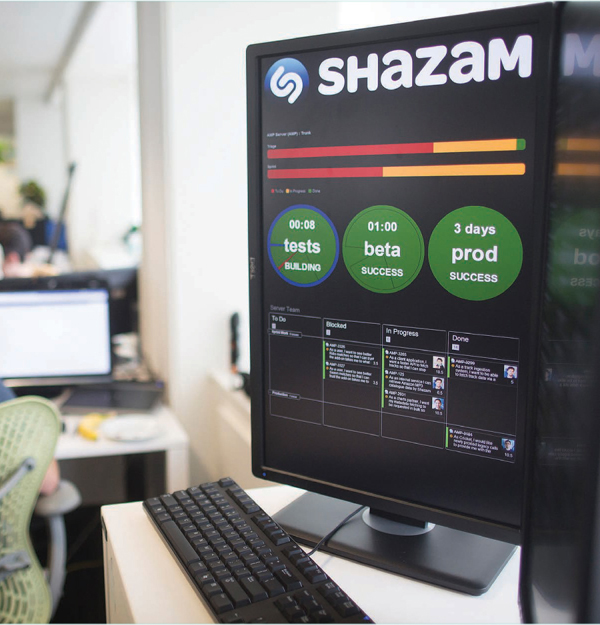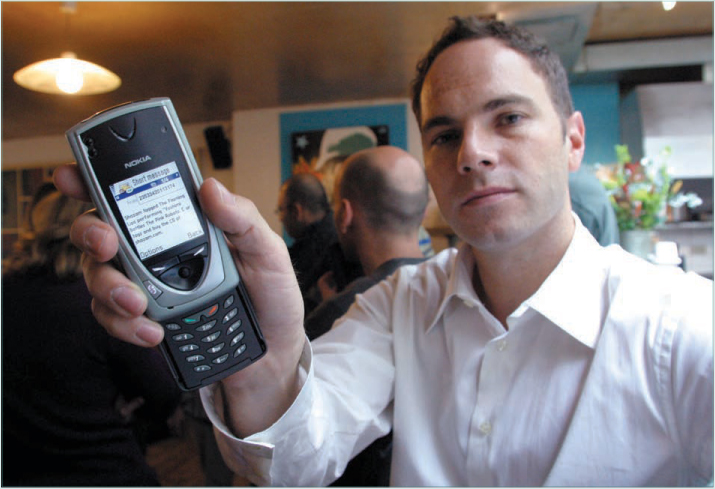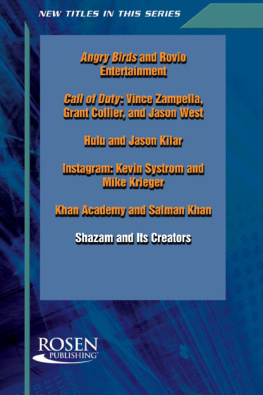Page List


Published in 2015 by The Rosen Publishing Group, Inc. 29 East 21st Street, New York, NY 10010
Copyright 2015 by The Rosen Publishing Group, Inc.
First Edition
All rights reserved. No part of this book may be reproduced in any form without permission in writing from the publisher, except by a reviewer.
Library of Congress Cataloging-in-Publication Data
Holl, Kristi.
Shazam and its creators/Kristi Holl.First edition.
pages cm.(Internet biographies)
Includes bibliographical references and index.
ISBN 978-1-4777-7925-5 (library bound)
1. Shazam (Computer file: Music identification)Juvenile literature. 2. Shazam (Firm: London, England)Juvenile literature. 3. Internet intertainment industryGreat BritainBiographyJuvenile literature. 4. Music and the InternetJuvenile literature. I. Title.
ML74.4.S53H65 2015
006.540019dc23
2014007972
Manufactured in the United States of America
Contents
S hazam! This magic word was the name of an ancient wizard in the Captain Marvel comic books. Whenever the orphan Billy Batson shouted the word Shazam! he was transformed into Captain Marvel. From that beginning, the word shazam came to mean magic or instant transformation.
Or, oddly enough, the name of an Internet company. Suppose you hear a song on the radio, at a dance, or in a restaurant. Youd love to hear it again and even own it. If only you knew the name of that song! Its no problem anymore. Just Shazam the tune, and youll have that informationand so much moreat your fingertips.
Using the Shazam app on your smartphone or tablet, hold the microphone toward the speakers that the song is playing from. From a small fragment of the sound track, Shazam will immediately show you the title of the song and the artist who sang it. You can then buy and download the song if you wish, or watch its music video. You can also download the lyrics for instant karaoke with your friends, or share music with friends on Facebook, Twitter, or Google+. During a big media event like the Super Bowl, the Shazam app lets you enter contests for free giveaways. Television commercials, brand names, and TV shows are also now Shazamable, or able to be tagged. This helps viewers shop online instantly for items seen while viewing. This ability to provide instant gratification has helped Shazam skyrocket to the top of the business charts.

Shazam is recognizable today as a worldwide song-identification app. Employees at the companys London headquarters monitor the service in order to continually improve it.
How is it possible to tag songs and brand names this way? Think of it like individual fingerprints. When you compare your fingerprint to others in a vast database, your fingerprint is immediately identifiable. Its the same with songs and other kinds of sounds as well, like the bark of a particular dog. Each has a unique sound print (or acoustic fingerprint) that can be collected. When a person wants to quickly identify a certain song, the Shazam app helps users do this by simply listening to a very small part of it. It then screens its database of sound prints and quickly identifies the song.
By mid-2013, Shazams music library held more than thirty million tracks. Shazam adds more than a million audio prints per month to its catalog. It acquires the tracks from music around the world. But thats not all. Shazams team decided to focus on two key services:
Name that tune and Buy that tune. They wanted users of their service not only to listen to the music, but also to cross over and become buyers as well.
Over time, the use of the Shazam music identification app became so widespread that Shazams company name turned into a popular verb. You may have even heard it used that way. You may have wondered, Whats that song? To which someone may reply, Shazam it.
While the Shazam app is instant, there was nothing instant about the companys start-up. It took ten years for Shazam to transform into a billion-dollar business. The idea for this business was born in an unlikely place. It took the combined talents of four young men: Chris Barton, Philip Inghelbrecht, Dhiraj Mukherjee, and Avery Wang.
Together, they transformed a small invention into the magic of Shazam.
The Name That Tune App
H ydrogen by itself is invisible and tasteless. Oxygen by itself is the same. But combine the two into H2O and you have something totally new and amazing: water. While there wasnt a chemical reaction when the four company cofounders came together, something almost as magical happened. Shazam!
AN UNLIKELY BEGINNING
Cofounder Chris Barton was a student at the business school of the University of California at Berkeley. On the first day of his MBA classes in 1998, he sat next to Philip Inghelbrecht. They became teammates on a school project, developed a friendship, and decided to start a company together. They were brimming with ideas.
Barton and Inghelbrecht considered two other online business ideas before Shazam. One had to do with selling contact lenses on the web. Barton thought they could make a lot of money with it. He called it a high-margin opportunity. Nonetheless, it sounded boring, and that idea was soon dropped. His friends jokingly called his second idea e-stalker. It was an idea for applying star power to websites. For example, movie stars would allow themselves to be tracked online. Then, when you were on Amazon, for example, a pop-up might notify you that Tom Cruise is on Amazon now. Barton thought websites would pay to have famous people tracked on their sites in order to draw more traffic. Later, he called it a crazy idea, too.

Cofounder Chris Barton, who thought of the Shazam concept, first envisioned the music ID service when he was a business student in Berkeley, California.
Barton was alone, trekking in the Himalayas in late 1999, when the idea for Shazam finally came to him. He dreamed of a service that would be able to identify hard-to-recognize music. His idea required two things: (1) inventing pattern recognition technology for creating acoustic fingerprints, and (2) forming a database of these acoustic fingerprints or sound prints. Bartons original idea was to identify music by monitoring radio stations. He thought that he would sell the software to the radio stations themselves so that they could track their own programming and playlists. It would only work for songs featured on the radio.
As Barton was taking a business course called Strategic Innovation, he was encouraged to think much more outside the box. What if he could invent something so that a person could know what song was playing using the actual sound heard by a phone? No one had ever done that. So Barton called his dad, who was a nuclear physicist. While no expert in this area, his dad had a scientific mind and could help his son explore the idea. (Later, the company would be launched on Bartons dads birthday, the nineteenth of August.)



















